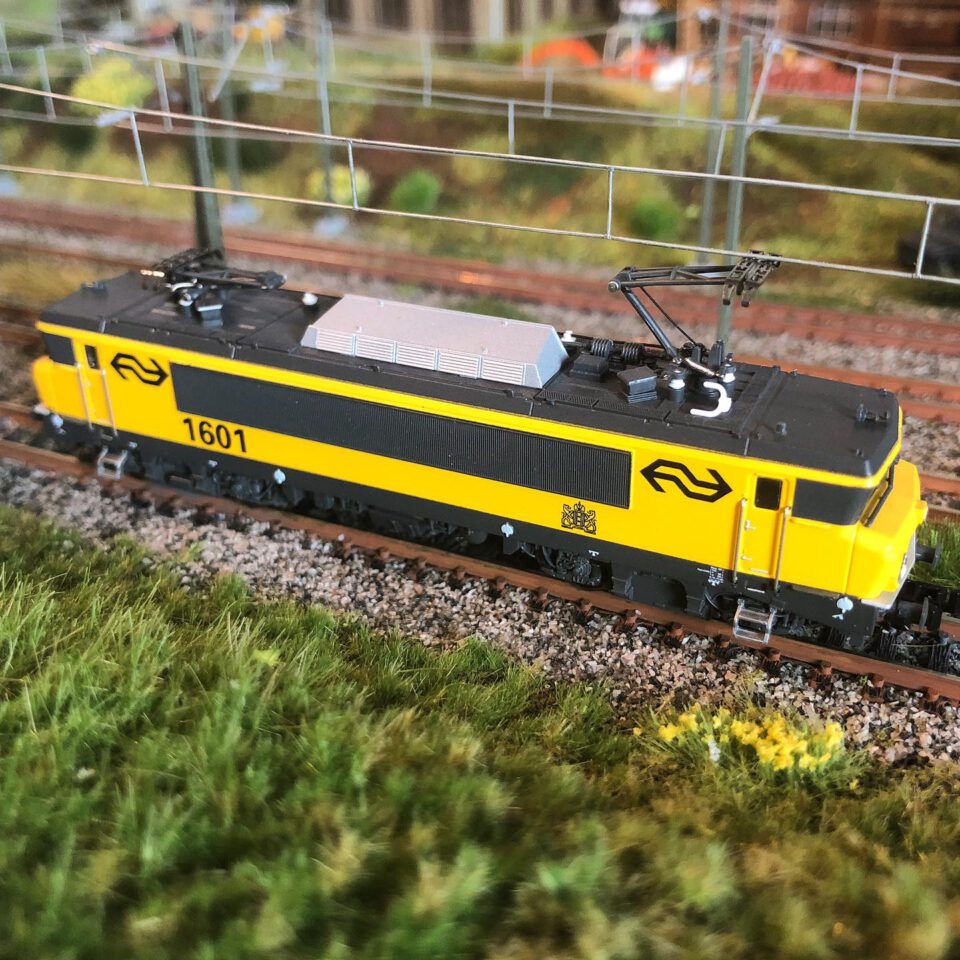In the late 1970s, the Dutch Railways urgently needed a strong electric locomotive. Inspired by the French SNCF BB 7200, the first 1600 series was delivered in 1981. Available in N scale from Fleischmann for some time now. Later, Minitrix also introduced the 1828. A better model, digital, but without sound. This year Fleischmann reintroduced the 1601, a completely new model digitally and with sound.
The real 1601 is now on the scrap heap. After being transferred to NS Cargo, it was removed in April 2019. Symbolically, my very first locomotive was a second-hand 1600 from Fleischmann. At the time of purchase, it was already ready for demolition. My love for this locomotive remained. That is why the Minitrix 1828 quickly became part of my collection. The chance to get a 1600 with sound came this year with the introduction of the Fleischmann 1601 (catalog number 732170).
the minitrix locomotive is visibly larger. especially higher.
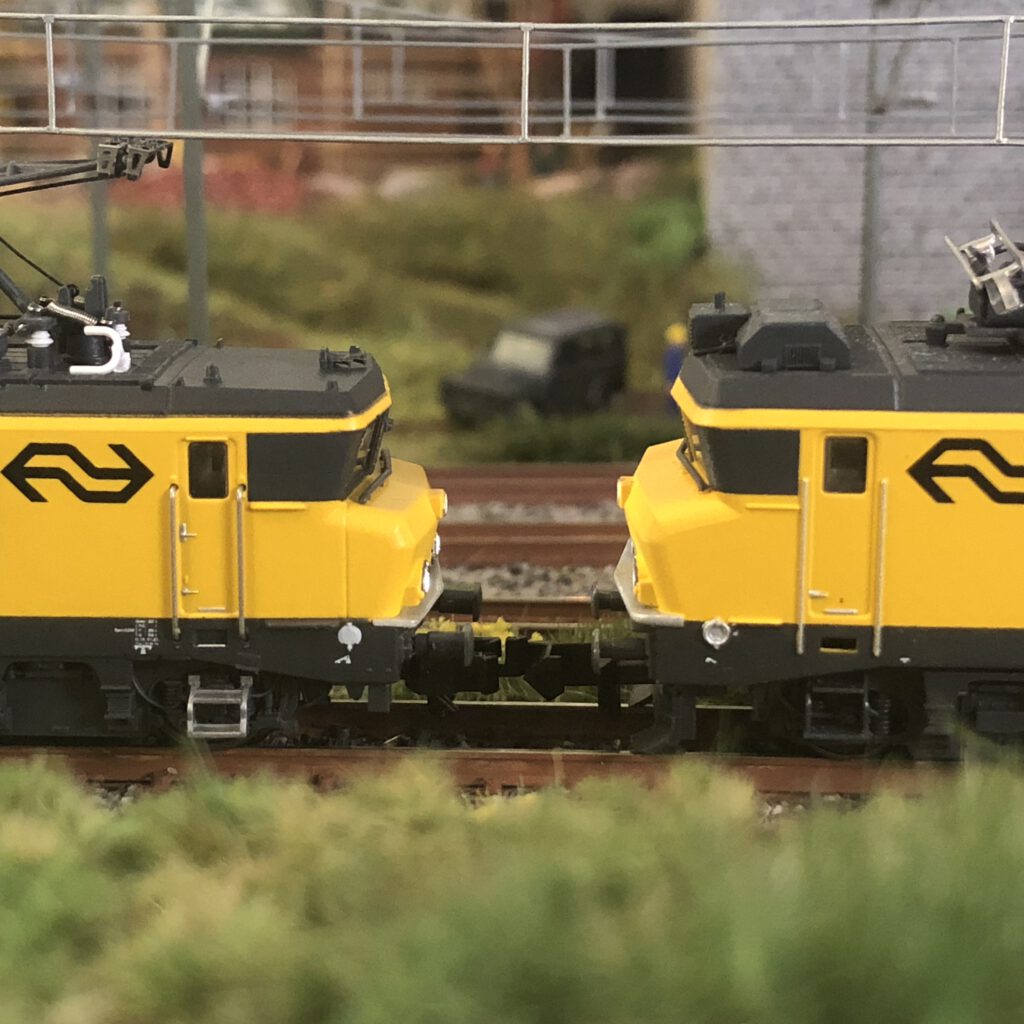
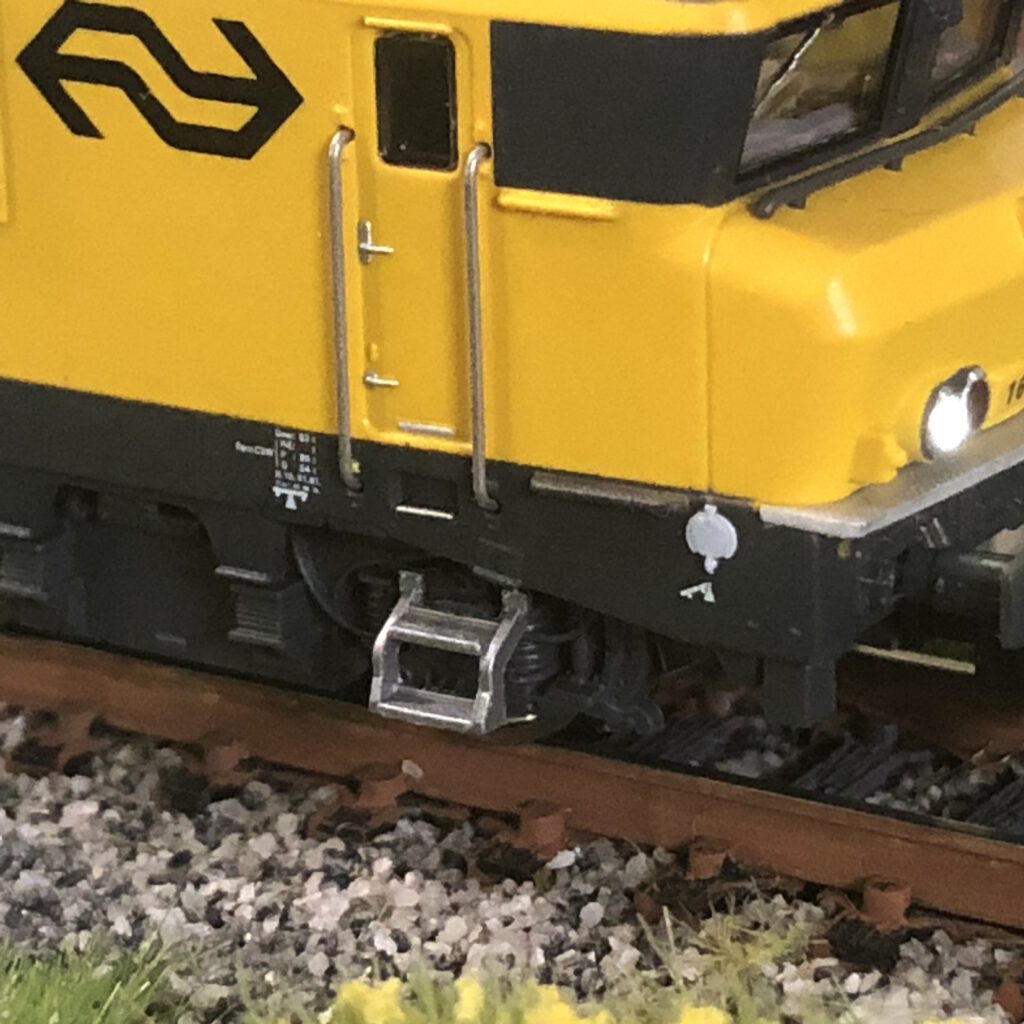
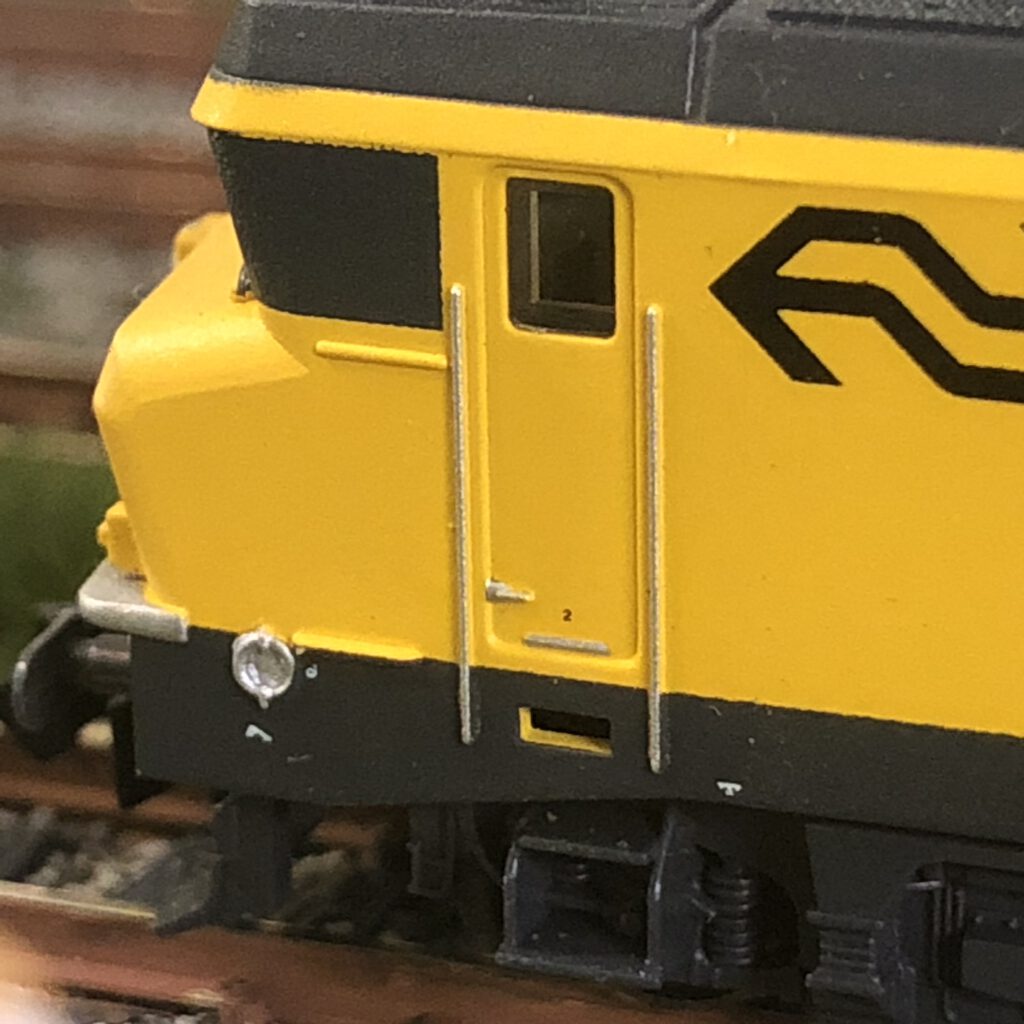
The first difference that stands out between the two is the size. The Minitrix locomotive is visibly larger. Especially higher. In addition, it is the details that make the difference. For example, the 1601 does have two ‘door handles’, and the 1828 does not. While this was certainly the case. On the Minitrix locomotive, the bars next to the cab are ‘painted’, while Fleischmann has used real bars. Finally, the tail lighting shines through on the Minitrix, the lighting can be seen under the locomotive. This is not the case with Fleischmann. Fleischmann’s tugs are also more natural than Minitrix.
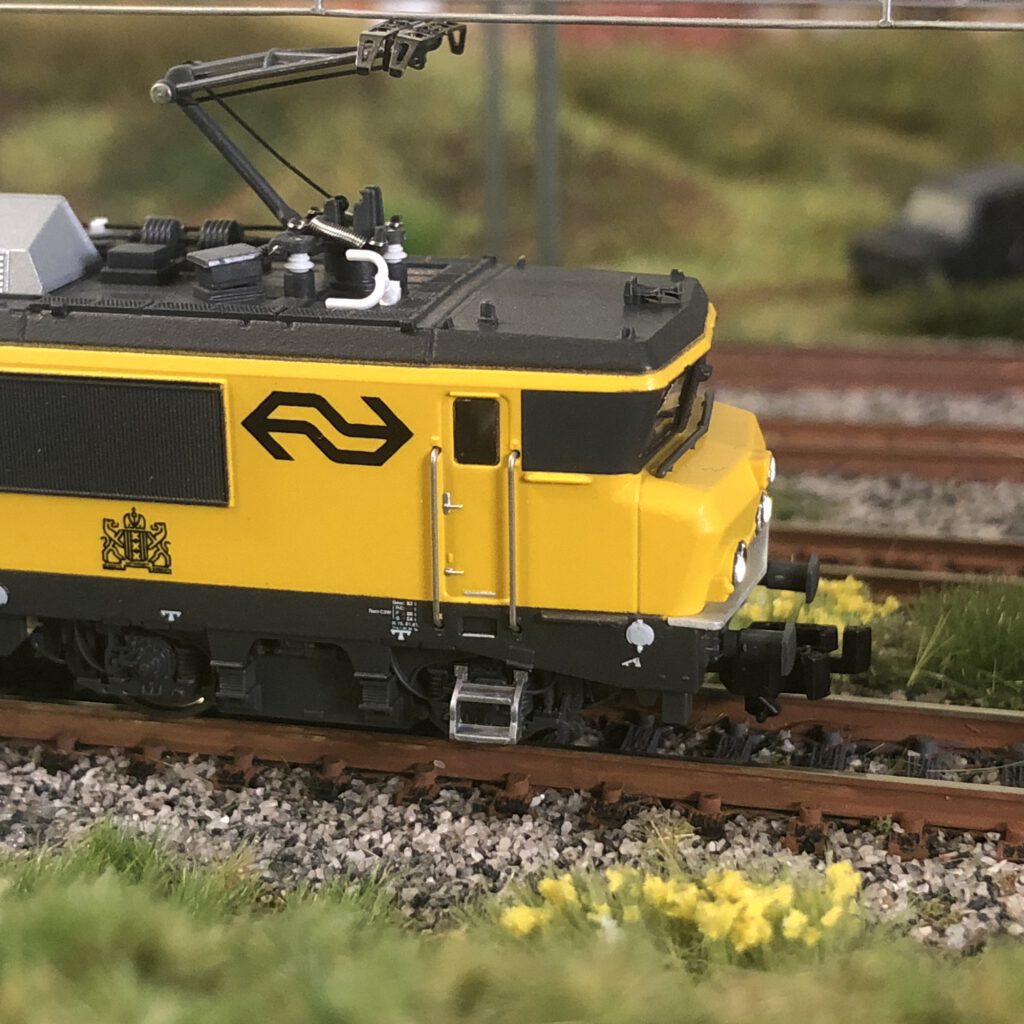
On one point there is a striking detail in Fleischmann. The stairs to enter the cabin. It is loosely mounted and painted in a metallic color. The effect is that it looks more like a hanging kitchen ladder instead of the steps that help the operator inside. The intention was good to detail this staircase in this way, in the experience this works out less well.
The built-in Zimo decoder features a wide range of digital options. The Z21 app shows no fewer than 29 functions such as cabin lighting, horn, pantograph against the wire (the sound) and traction test. The latter and the ‘air cooling’ are the recognizable 1600 sounds. Every train enthusiast in the Netherlands will link it directly to this series.
The driving behavior is good. The locomotive works optimally with 28 speed steps, the Z21 app defaults to 128. So this has to be adjusted. Many digital locomotives have an option to run ‘directly’. This means that the locomotive immediately deploys the speed specified. Like an old-fashioned transformer. There is no gradual build-up. For an ‘unwarmed’ locomotive, this is often pleasant to get going. It is likely that owners of this locomotive want to change the ‘traction curve’, it has a guided structure, so that the locomotive often stops after the first start.
Fleischmann clearly takes a step forward with this locomotive and leaves the outdated Minitrix model far behind. If you appreciate sound in a digital version, then the Fleischmann with a suggested retail price of 274 euros is the right choice.
- NS 1601 DCC Sound
- Supplier: Fleischmann
- Item number(s): 732170
- Target price: € 274.90
This article is also available in:
![]() Nederlands
Nederlands
